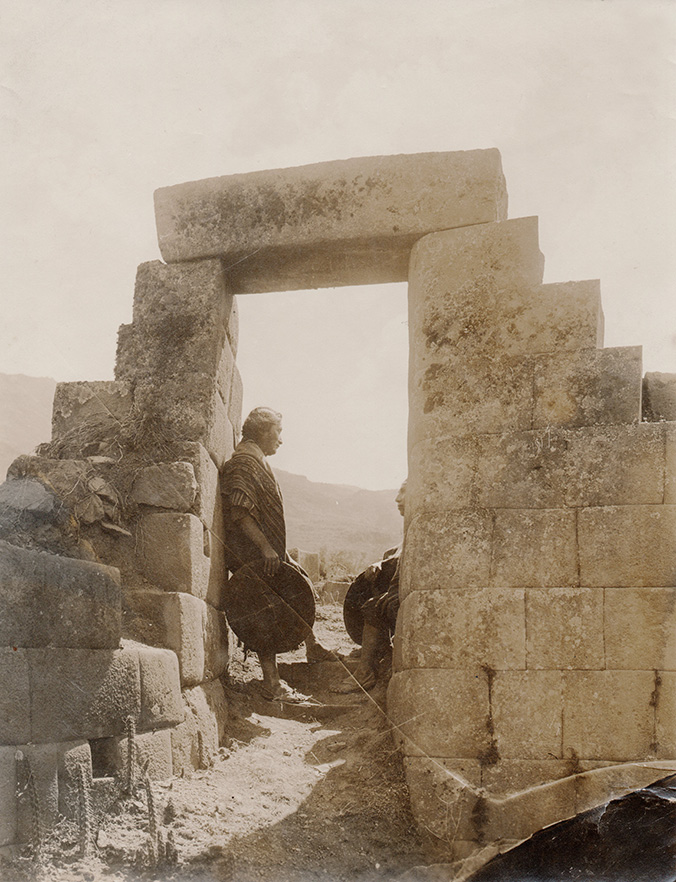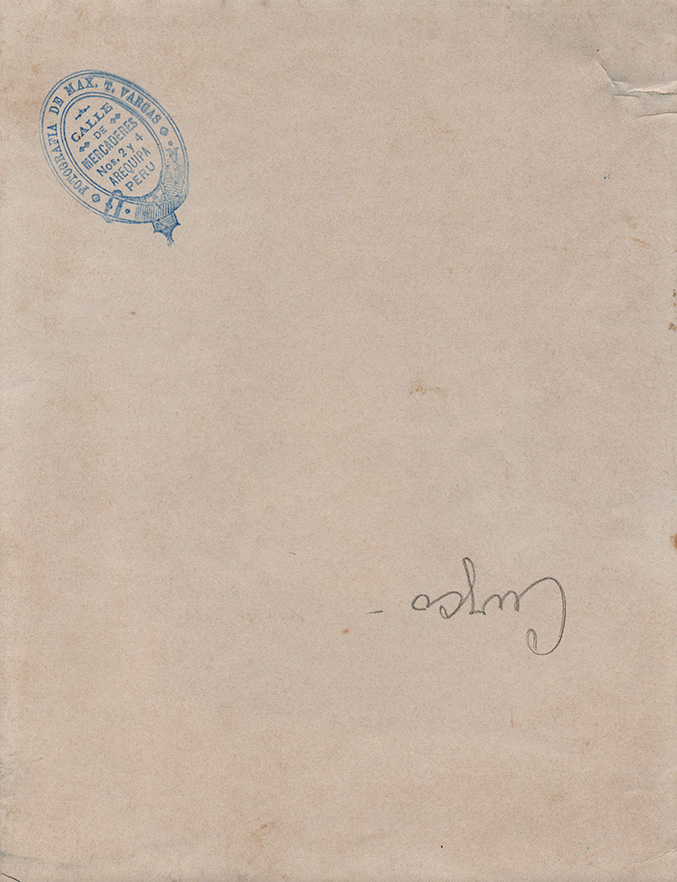Inca portico of the Intihuatana in Pisac. Cuzco, Peru. Circa 1920.
Gelatin silver print toned in sepia -measures: 21.3 x 16.4 cm / 8.38 x 6.45 in.-, with oval, wet stamp on the reverse: PHOTOGRAPH OF MAX. T. VARGAS - CALLE DE MERCADERES Nos. 2 and 4 / AREQUIPA / PERÚ and in pencil, the word “Cuzco”. Exemplar in very good condition.
The Inca Empire or Tawantinsuyo is considered the largest in pre-Columbian America. Although its period of domination was very short, its enormous extension encompassed the current Andean territory of five South American countries. This advanced civilization whose center was Cusco has left us an architectural monumentality that astonishes.
The conquest and subsequent destruction of the Inca Empire by the Spanish troops left significant consequences, including the eradication of their native beliefs, an action that caused the destruction of their "pagan" symbols replaced by the Christian faith.
In this unequal struggle of religions, the Inca altars dedicated to the sun god or Intihuatanas in Quechua fell in a special way. Very few survived, among them the one found in the archaeological complex of Pisac, just 30 kilometers from Cusco. This sculpture was built in granite stone and overlooks the fertile surrounding valley from above.
If the Incas built that vast empire stone by stone, it was their descendants, the native photographers, who best interpreted that stone monumentality with their inspired cameras. Among them, the Peruvian Maximiliano Telésforo Vargas (1874 - 1959), the renowned Max T. Vargas, stood out for his enormous expertise. A native of Arequipa, he developed an extensive career in both Peru and Bolivia and was the teacher of other talents such as the famous Martín Chambi and the Vargas Brothers.
From his essay on the ancient Pisac comes this magnificent record, where he symbolically located a native peasant reclining on the Inca portico of that mythical Intihuatana. The low angle shot highlights the message dedicated to the lost civilization.
The German researcher Natascha Lara informs us that, due to its iconographic value, Vargas decided to use that same image to edit it in Germany -it is registered under number 188454- through the postal format and by the color chromolithography process. We are definitely in front of a pearl of ancient Andean photography.
Abel alexander President of the Ibero-American Society for the History of Photography
ILM
| AUTHOR | MAX T. VARGAS |
|---|---|
| ITEM | 20 |
Are you interested in selling some works?
Send us an email briefly indicating
which works you intend to put on sale, and we will respond. click here
Subscribe to our newsletter to be updated.
Check our Newsletters
